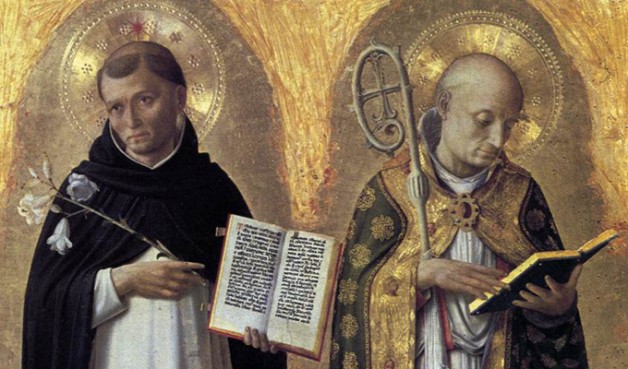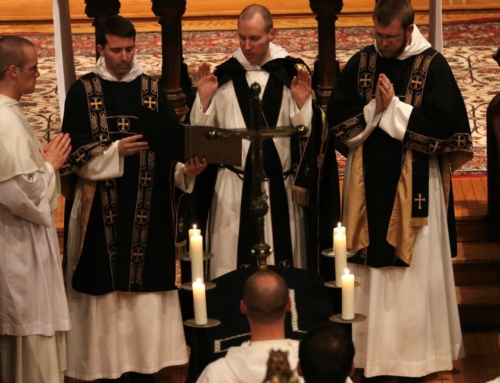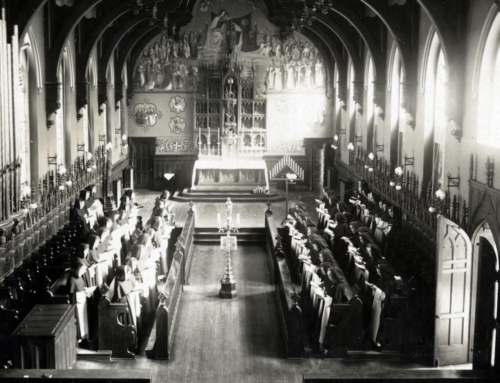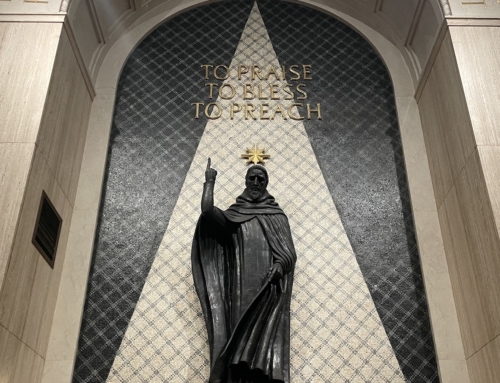We are just 3 days from Christmas. This may seem ordinary, since every year we celebrate the holiday and talk about the birth of Christ casually, but the Incarnation is a radical belief. God became man. The almighty Lord of Lords took flesh, and lay as a helpless baby in a manger.
As normal as it may be to speak of Jesus’ birth, throughout the ages groups have arisen that find it too hard to accept. In the twelfth century one such group rose to prominence in Southern France: the Cathars. The Cathars were believed to have originated from Gnostic practices brought to France and Italy from Eastern Europe. Tradition associates them with Bulgaria in particular.
The Cathars held that matter was evil and the spirit good. Our bodies were therefore material traps for our souls. The most advanced Cathars thus lived with great disregard for self. They kept poverty—don’t need more worthless matter—and abstained altogether from sex—lest they produce more souls trapped in matter.
Our Christian belief in the Incarnation of Christ and in the one God who created “all things visible and invisible” stands in direct opposition to what the Cathars were teaching. However, the Church was not well positioned to correct their error. An unfortunate number of the clergy were late-born sons of nobility, who without much education were forced into the celibate life to preserve family fortunes. The lifestyles they were accustomed to since childhood proved scandalous when compared to the Cathars’.
By 1203, when St. Dominic de Guzmán and his bishop Diego passed through what is now Southern France on the way to broker a marriage in Scandinavia, whole towns had been converted to the heresy.
The official solution to this problem was to send papal legates with impressive retinues to bring lost souls back into the fold. But those persuaded by simplicity could not be wowed by ostentation.
In 1206 Bishop Diego and Dominic were granted permission to begin a preaching mission, while living voluntary poverty. That same year, Dominic founded a convent of nuns who had converted from the Cathari heresy. The women, who prayed for the preacher as he continued his mission, would become the Dominican Nuns.
Ten years later, when Dominic had gathered around him a community of men committed to preaching the Gospel, a new Order received the pope’s blessing. On December 22, 1216, Pope Honorius III granted the Order of Preachers its bull of approbation. It seems fitting, given the importance of the Incarnation in challenging the Cathars, that the Order received its recognition so close to Christmas.
Today as we celebrate the 795th anniversary of the Order of Preachers, the problems that spurred Dominic to found his order are just as relevant as they were in the beginning of the thirteenth century. The sons of St. Dominic must preach to a world that shares the Cathars’ tendency to pit body against soul.
On the one end of the spectrum there are people who feel like they are men trapped in women’s bodies (or vice versa). This vision of the human being, like that of the Cathars, separates the soul from the body. You cannot actually have the soul of a man and the body of a woman, because the soul is the form of the body, not some foreign invader dwelling in a fleshly house. You are not just a soul trapped in matter. You are body and soul.
On the other end, there are figures for whom there is nothing more than the material world we have been given here. Such a viewpoint rejects all talk of immaterial being in favor of a hard-nosed “realism” about the visible world. To such people, talking about the soul at all is literal non-sense; I am just my body, which is just a collection of atoms behaving in more or less random ways. All the basic components of our experience—free will, love, desire for eternity, and all the rest—are sacrificed on the altar of materialism, transformed into mere “illusions” created by the firing of neurons in the brain.
Neither the spiritual component of our lives on this earth nor the material component of our lives can exist on its own; each will collapse unless integrated with the other. This is why the God who is pure spirit took on flesh in Jesus Christ, to bring the whole person, body and soul, back to God. It is the legacy of St. Dominic to preach the Gospel in this world of extremes in an integrated way, avoiding false dichotomies and showing the light of truth.
Image: Fra Angelico, Perugia Altarpiece







